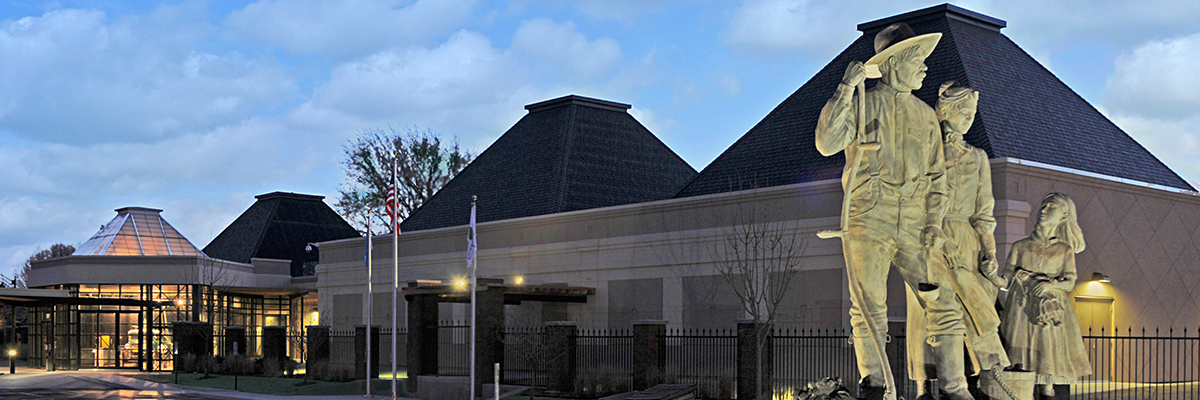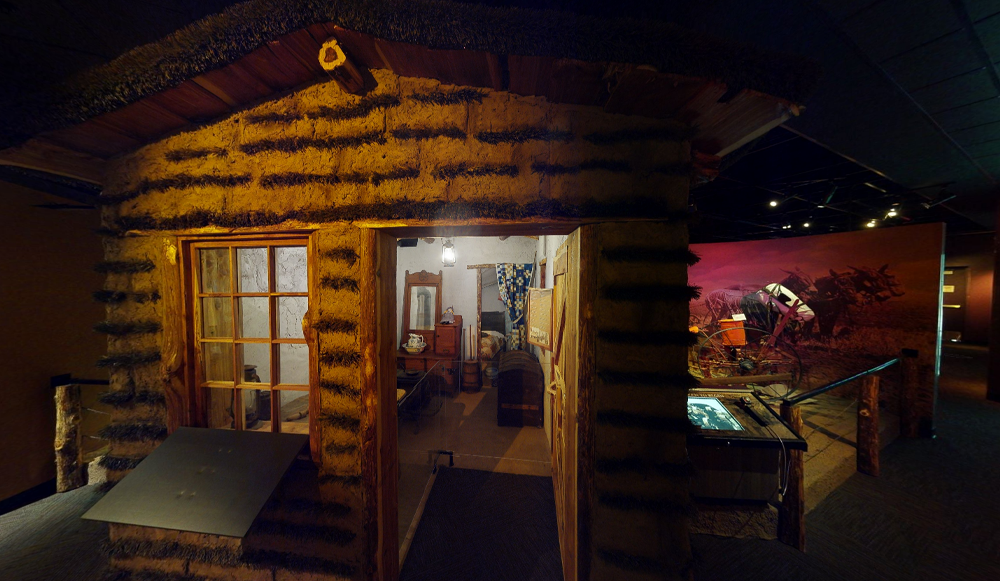
Cherokee Strip Regional Heritage Center
Cherokee Strip Regional Heritage Center
507 South Fourth Street
Enid, OK 73701
580-237-1907
csrhcinfo@history.ok.gov
Director: CJ Budy
Heritage Center Hours
Tuesday through Saturday
10 a.m. to 5 p.m.
| Closed Sunday, Monday, and all state holidays |
| Adults | $7 |
| Seniors (62+) | $5 |
| Students (6–18) | $3 |
| Family (up to 6 people) | $18 |
| Group Rate (10+) | $5/person |
| OHS Members, CSRHC Members, Children (under 6), Veterans and Active Military (with ID) | Free |
The Heritage Center’s exhibits take visitors on a journey through history from life before the and after the Land Run of 1893, to early settlers, oil and gas, the story of Enid, and Phillips University. A special exhibit gallery features traveling and temporary exhibits. The Heritage Center also offers resources for research. The Research Center includes Enid city directories, newspapers on microfilm, Phillips University yearbooks, and oral histories.
The Sons and Daughters of the Cherokee Strip Pioneers created the original museum in the 1960s. In the 1970s the museum moved to its current location and became a property of the Oklahoma Historical Society. The Cherokee Strip Regional Heritage Center opened in 2011. For more information, visit the Cherokee Strip Regional Heritage Center’s website at www.csrhc.org.
Virtual Tour

Take the Cherokee Strip Regional Heritage Center’s virtual tour.
Humphrey Heritage Village
The Humphrey Heritage Village was dedicated more than 30 years ago on the grounds of the Cherokee Strip Regional Heritage Center. The original 1893 Enid Land Office, a 1902 church, the 1905 Glidewell house, and an 1896 Turkey Creek schoolhouse make up the historic buildings in the village. In 2024 came the addition of a fifth structure. A one-room log cabin, built after the Land Run of 1893 by the Sneed family near what is now Cleveland, has been rebuilt on the grounds of the CSRHC.
Enid’s original 1893 US Land Office, originally located on the east side of the Enid city square, was where thousands of claims were filed over 130 years ago. The 1896 Turkey Creek School served as a one-room school for the Imo area until 1947. Reverend Francis Key Brooke first established the 1902 First Episcopal Church of Enid. In 1905, James and Alice Glidewell built their two-story home in Helena. Glidewell was a justice of the peace, banker, and self-taught lawyer. The Sneed Cabin was a simple log home where six of the Sneed’s nine children were born. Today, these historic structures are used for living history programs, classes, and other events.
View Collections Online
More than nine hundred photographs from the William Edson Photograph Collection, Richard McConkey Photo Collection, and CSRHC Collection are available on The Gateway to Oklahoma History.

